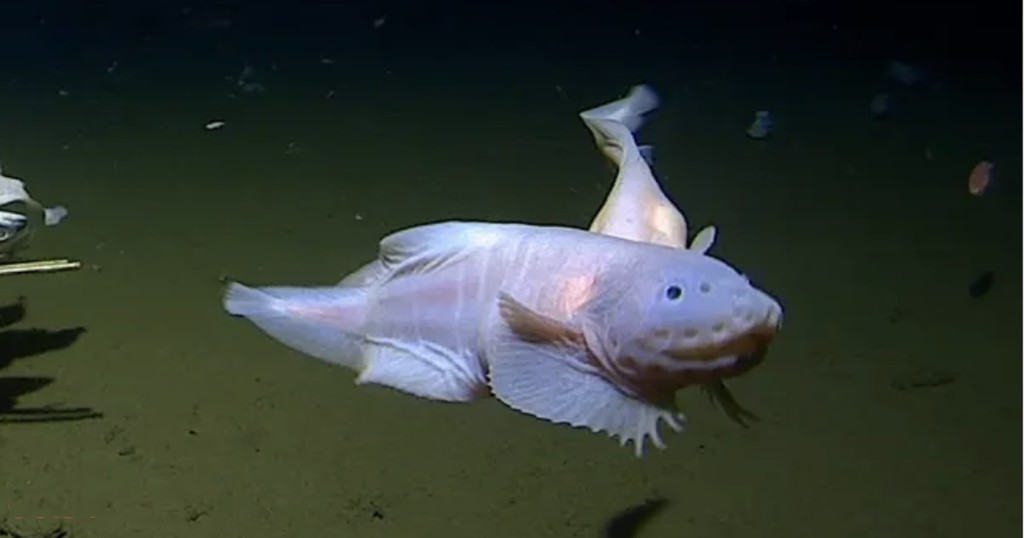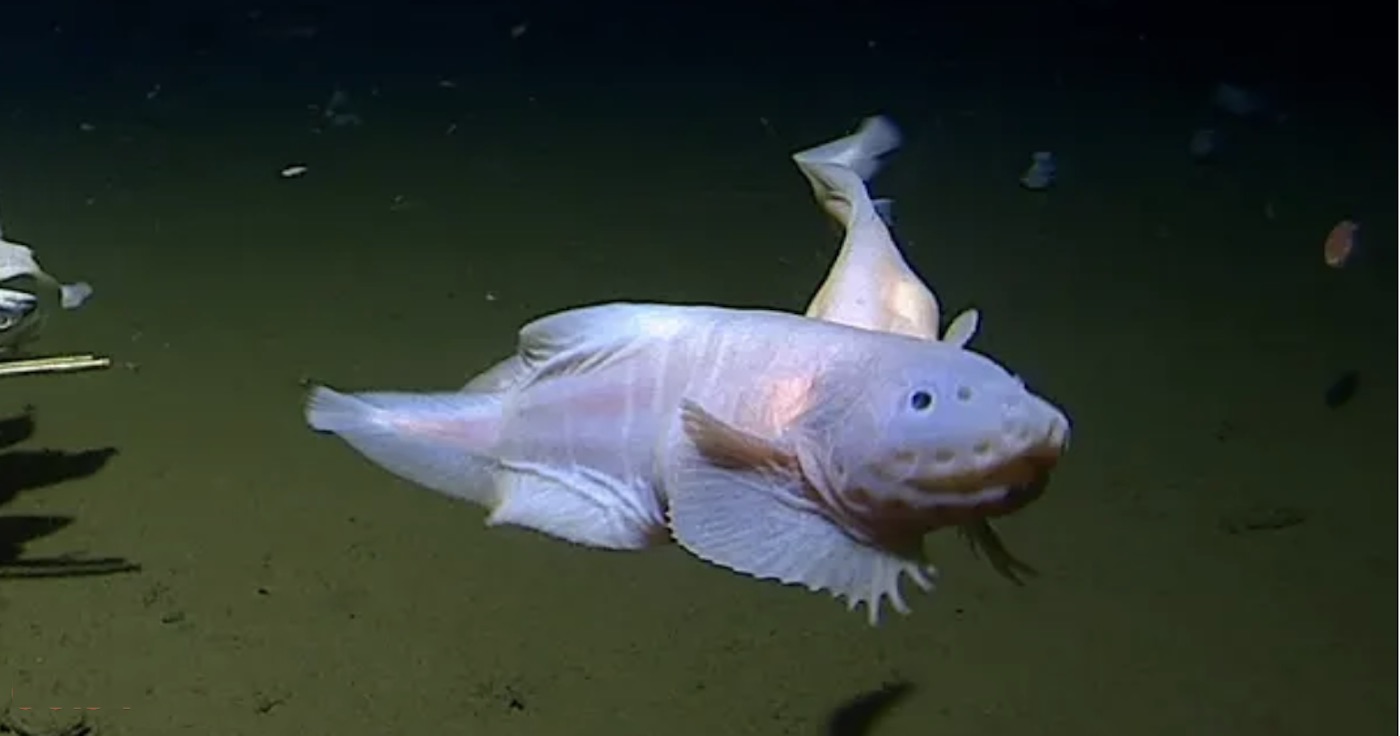
An as-of-yet undescribed species of snailfish was recently recorded swimming about—a mind-boggling 5 miles (8 kilometers) under the surface of the ocean.
An unmanned submersible called a lander used a baited trap to record several Pseudoliparis individuals swimming about at a depth of 8,336 meters in the Izu-Ogasawara trench, southeast of Japan.
The expedition was organized by the Minderoo-University of Western Australia’s Deep Sea Research Center in partnership with the Tokyo University of Marine Science and Technology. The Izu-Ogasawara Trench is one of three the team will explore, the deepest being more than 9 kilometers down.
This clueless-looking fish has several adaptations to living in an area where the pressure is 800 times greater than at sea level. Rather than scales, it has a gelatinous outer mass, which is theorized to be less susceptible to pressure, and evolutionarily speaking, a cheap adaptation.
They also don’t have swim bladders, which is a small pocket of gas typical of most fish. Trying to maintain gas in those kinds of pressure zones is simply untenable.
However, the expedition’s chief scientist, who is also the founder of the Minderoo-UWA Deep Sea Research Centre, Professor Alan Jamieson, told the Guardian that this snailfish is not a deep sea fish.
MORE DEEP SEA NEWS: Man Who Found World’s Deepest-Dwelling Octopus and Jellyfish Scores 3-of-a-Kind, With Deepest-Dwelling Squid
“They’re the deepest fish in the world, but they’re not a deep sea fish,” said Prof. Jamieson. “But they’ve speciated into every corner of the globe, and they’ve overtaken all the deep sea fish. These are 1,000 meters deeper than what you might think of as being a deep sea fish.”
Indeed snailfish have been recorded living in shallow water as well, and most other pelagic zones down to the bottom of the trenches Jamieson is exploring.
MORE DEEP SEA NEWS: Weird and Wonderful Discoveries of New Deep Sea Fish Below Australia’s Ancient Underwater Volcanoes
“Fish all have osmolyte, a fluid in their cells that they use to counteract pressure—it’s the thing that makes that fishy smell,” Jamieson said. “One of the only things, when you look at fish from a biochemical point of view, that is linear with depth is the concentration of that fluid.”
He goes further to say that below 5 miles, slight changes in temperature prevent fish from increasing the concentration of osmolyte in their cells, predicting that fish simply can’t handle the pressure once depths retreat a further 1,200 feet (400 meters) down.
WATCH the fish in action from The Guardian…
SHARE This Record-Setting Fish With Your Friends…




















